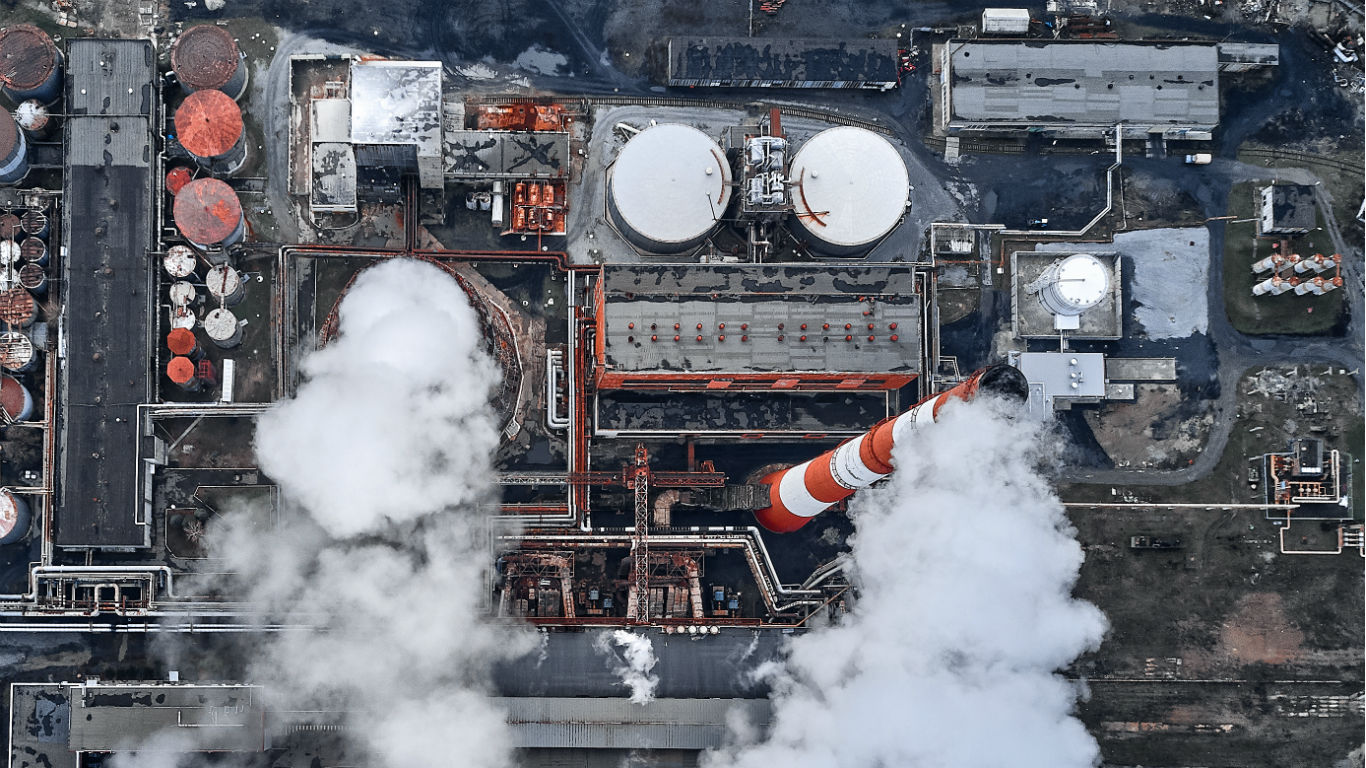
More than 141 million people — are routinely exposed to dangerously polluted air, according to the American Lung Association’s “State of the Air 2019” report. That’s over 7 million more people than the previous year’s report indicated. As climate change continues to cause record-breaking heat, ozone pollution — one of the least controlled and most dangerous pollutants — is getting worse.
Harmful to breathe, ozone is created when pollutants such as gases coming out of tailpipes and smokestacks come into contact with sunlight. Higher temperatures increase ozone formation and spark wildfires that spew more dangerous particles into the air — and these are the hottest cities in every state.
As one of the states with the highest average temperatures, it’s no surprise then that of the 25 most polluted metro areas in the United States, 11 are in California. 24/7 Tempo reviewed the 25 metropolitan areas with the highest levels of ozone pollution, also known as smog, from the American Lung Association’s annual “State of the Air 2019” report.
In addition to ozone pollution, the ALA report also considers particle pollution, which is measured in short-term spikes in a given year and in long-term annual averages.
Because low-income neighborhoods tend to lie next to industrial districts, highways, and power plants, residents of these communities are often exposed to the highest levels of pollution. And these are the poorest counties in every state.
Individuals inhaling high levels of these particles are at considerably greater risk of adverse health outcomes. People suffering from asthma, chronic obstructive pulmonary disease (COPD), and diabetes, as well as the elderly and the very young are at an even greater risk. Other health risks include difficulty breathing and cardiovascular-related illnesses. And this is just one of at least 28 dangerous things experts have linked to heart disease.
Click Here to read about the 25 Most Polluted Cities in the US.
To identify the 25 most polluted U.S. cities, 24/7 Tempo reviewed the metropolitan statistical areas with the highest levels of ozone pollution, measured in days in a year when the concentration of ozone, or smog, exceeds the EPA standard from the American Lung Association’s “State of the Air 2019” report.
Short-term particle pollution — which is measured in days with excessive particle pollution levels each year and long-term particle pollution, expressed as the annual average concentration of particulate matter — very small air pollution particles that pose significant risk to human health when inhaled — as well as the number of area residents with asthma, including the number of adults and the number of pediatric cases of the disease — came from the ALA.
The incidence of cardiovascular disease and the number of residents who have been diagnosed with chronic obstructive pulmonary disease (COPD) at some point in their lives also came from the ALA.
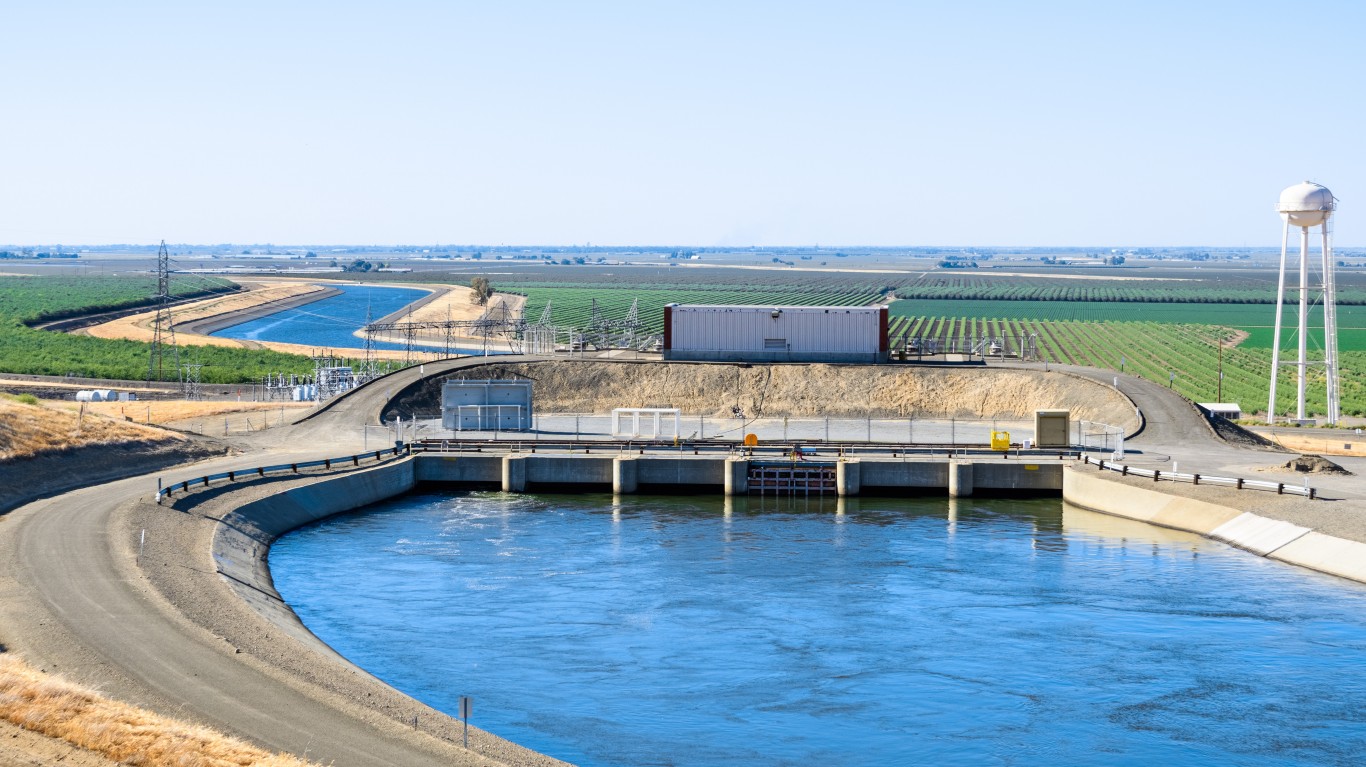
25. Merced, CA
> High ozone days per year: 25
> No. of days with unhealthy particle pollution: 12
> People with asthma: 20,047
> Population: 272,673
As one of the larger agricultural producers in California, Merced County’s economy depends heavily on the sector. Pushing for air quality restrictions on trucks and other agricultural equipment could therefore be tough without offering financial incentives.
[in-text-ad]
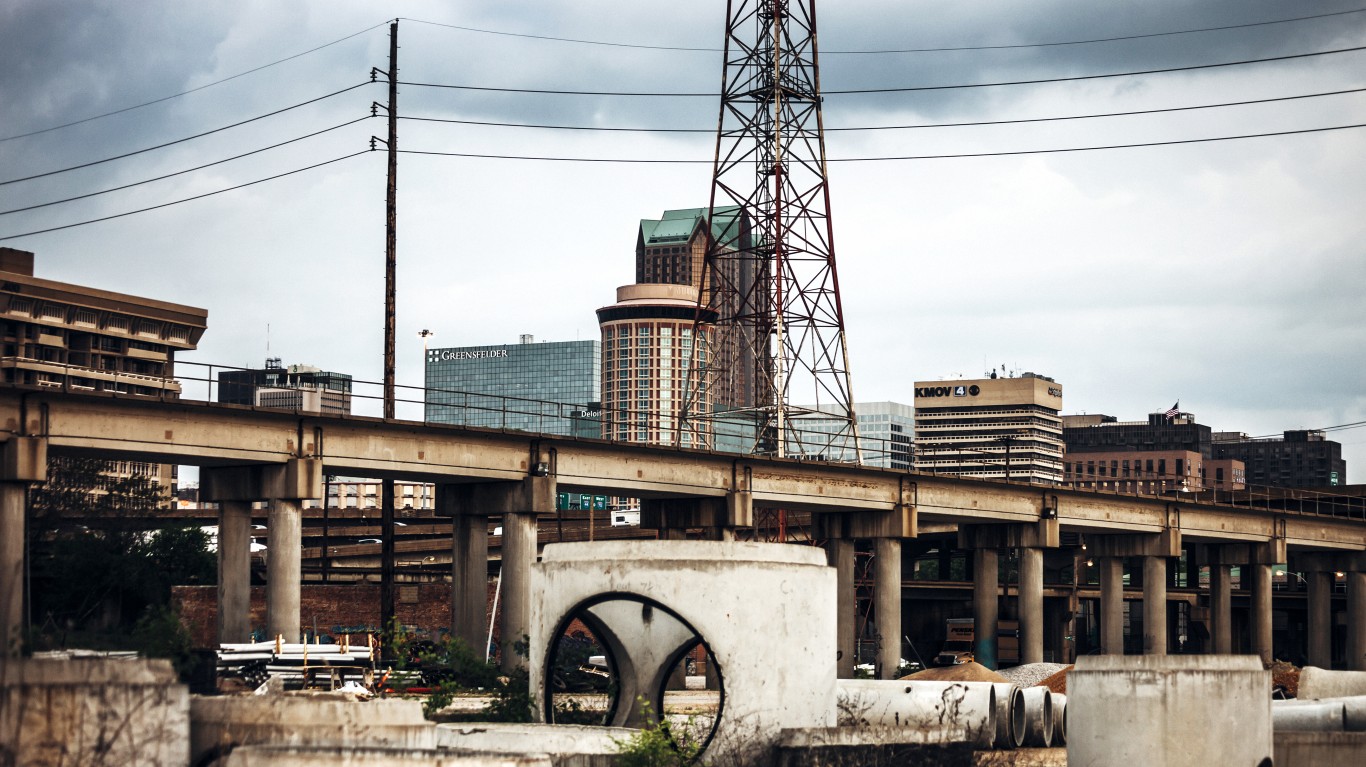
24. St. Louis, MO-IL
> High ozone days per year: 26
> No. of days with unhealthy particle pollution: 3
> People with asthma: 231,907
> Population: 2,807,216
St. Louis and the surrounding areas have a long history of industrial pollution, mostly due to coal burning for electricity. An ongoing EPA lawsuit initiated over eight years ago alleges that an area power plant has been emitting dangerous levels of sulfur dioxide, in violation of the Clean Air Act.

23. Cincinnati, OH-KY-IN
> High ozone days per year: 26
> No. of days with unhealthy particle pollution: 0
> People with asthma: 179,759
> Population: 2,180,746
The Cincinnati metro area is another area with a long history of coal pollution from manufacturing and transportation. Though the area, along with parts of Kentucky and Indiana, still has high ozone levels, the number of high ozone days is less than half the number 20 years ago due to the cleanup of coal power plants and reduction in diesel engines.
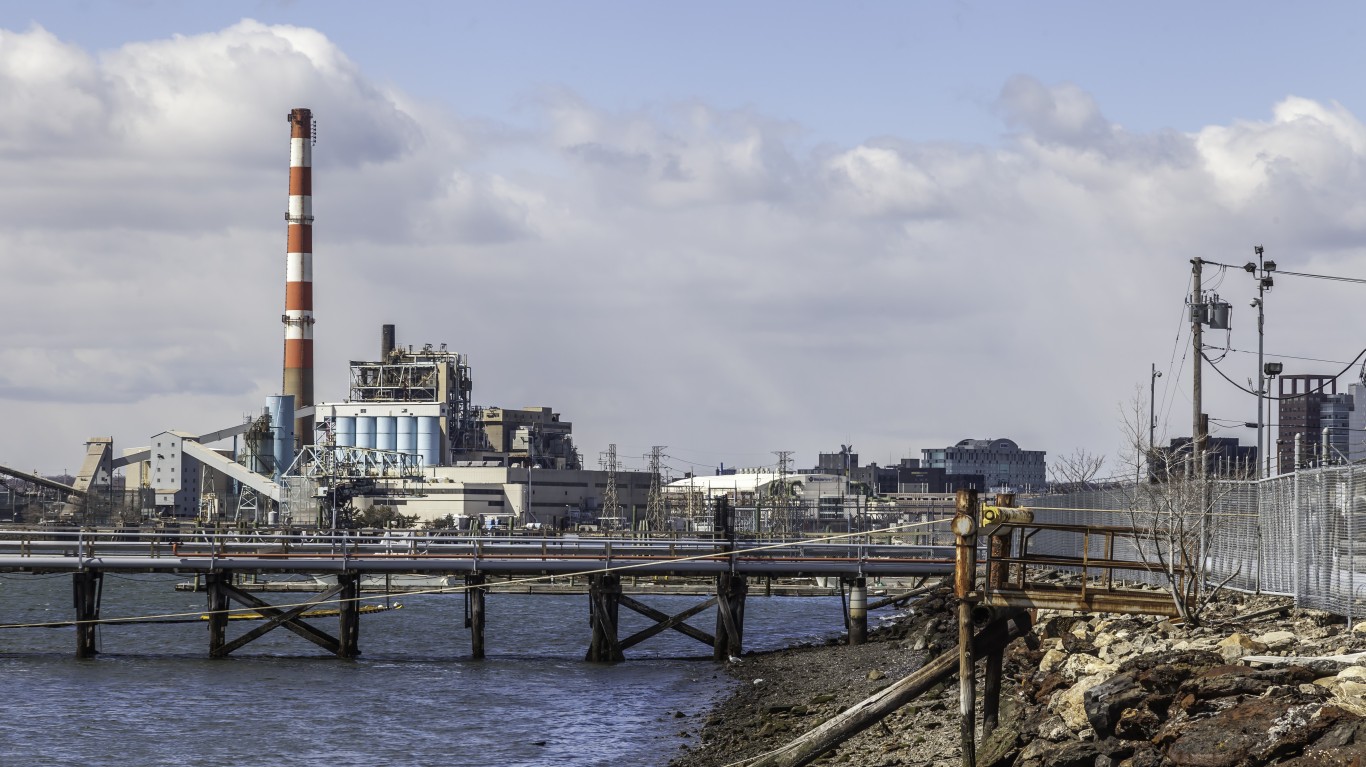
22. Bridgeport-Stamford-Norwalk, CT
> High ozone days per year: 26
> No. of days with unhealthy particle pollution: 0
> People with asthma: 106,805
> Population: 949,921
In response to EPA pressure to meet air quality standards, Connecticut officials claimed that over 90% of the state’s pollution is carried in from out of state, and that the unfortunate combination of location, weather patterns, and travel routes is what leads to high ozone levels that the state is nearly powerless to counteract.
[in-text-ad-2]
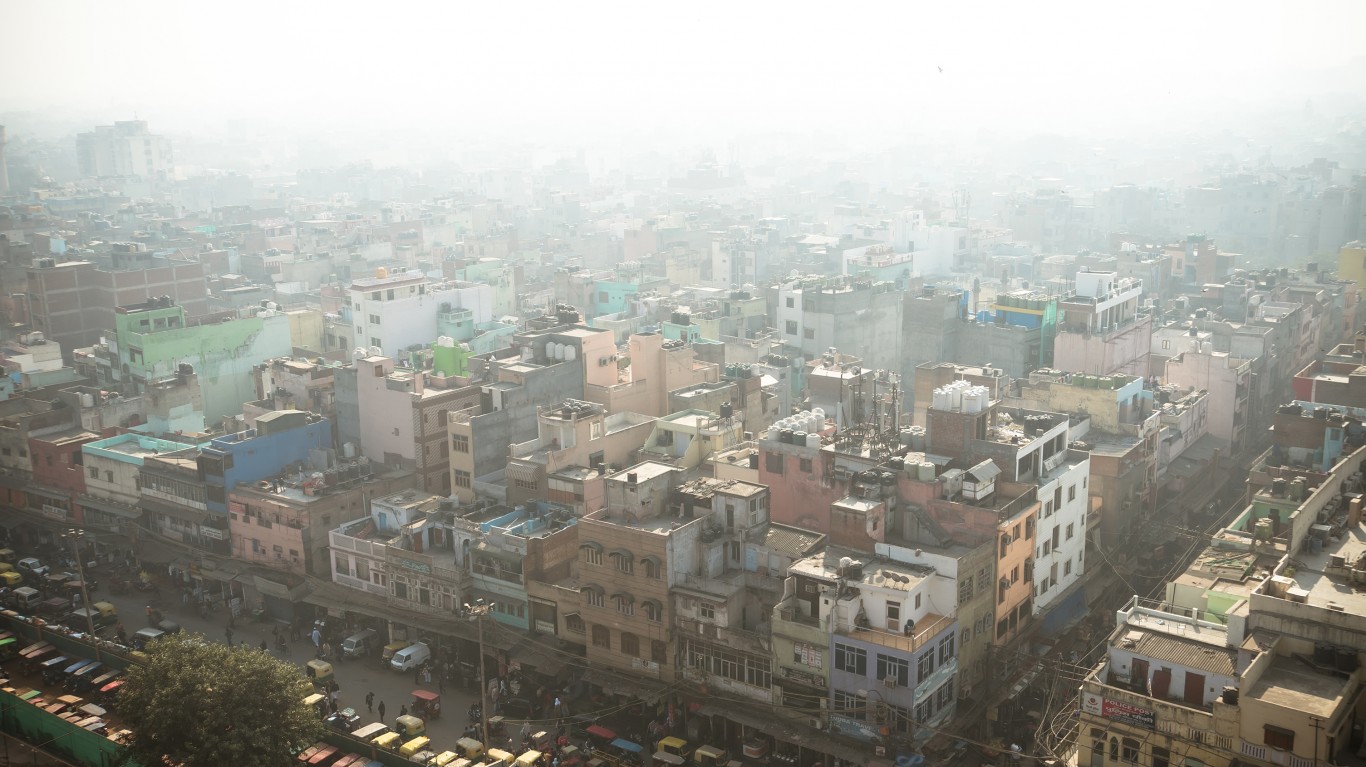
21. Washington-Arlington-Alexandria, DC-VA-MD-WV
> High ozone days per year: 27
> No. of days with unhealthy particle pollution: 1
> People with asthma: 449,887
> Population: 6,216,710
In addition to being downwind of many Midwestern coal plants, the D.C. metro area is also notorious for high traffic volume, which contributes to higher ozone levels. In 2018, the Washington D.C. City Council passed a clean energy act to reduce emissions. The bill imposes a carbon tax on natural gas and fossil fuel based-electricity.
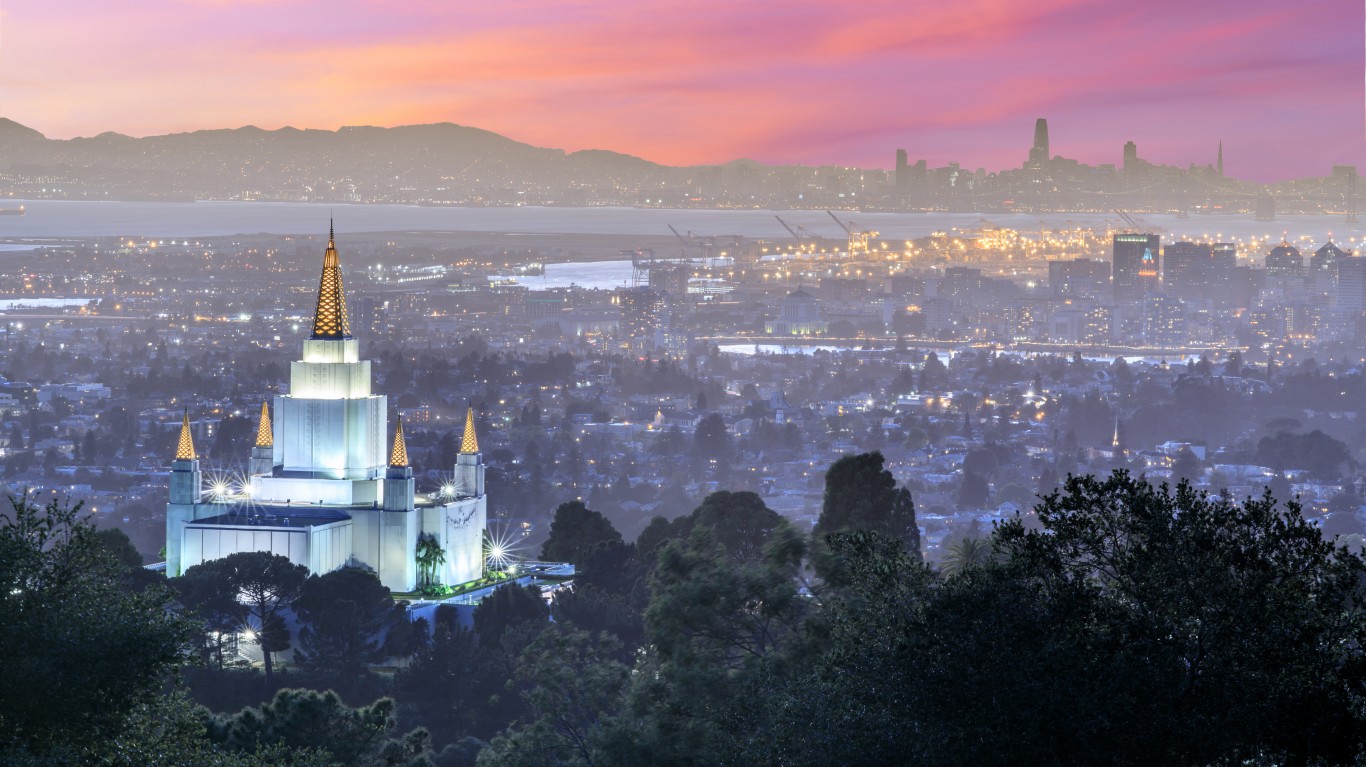
20. Salt Lake City, UT
> High ozone days per year: 30
> No. of days with unhealthy particle pollution: 9
> People with asthma: 97,871
> Population: 1,203,105
Though particulate levels have been reduced by 50% since the ’80s, ozone levels remain high in the Salt Lake Valley. Because it is surrounded by mountains, smog tends to settle in the city in the winter after snowstorms and sometimes does not clear for weeks in a phenomenon known as thermal inversion.
[in-text-ad]

19. Modesto, CA
> High ozone days per year: 33
> No. of days with unhealthy particle pollution: 16
> People with asthma: 40,719
> Population: 547,899
Out of the most polluted cities in the United States, Modesto is among the six areas with the highest number of unhealthy particle pollution days (four of the others are also in California and one in Alaska). The Central Valley, which is surrounded by mountains that trap the area’s pollution in the valley, is home to eight of the most polluted cities nationwide.

18. Atlanta-Sandy Springs-Roswell, GA
> High ozone days per year: 37
> No. of days with unhealthy particle pollution: 2
> People with asthma: 393,770
> Population: 5,882,450
A sprawling area that ranks among the cities with the longest commuting times in the nation, the Atlanta metro area amasses most of its air pollution from automobiles. The city’s public transit system has yet to provide adequate service to many of the area’s rapidly developing suburbs.

17. Madera, CA
> High ozone days per year: 38
> No. of days with unhealthy particle pollution: 10
> People with asthma: 11,665
> Population: 156,890
Another of California’s Central Valley agricultural hubs, Madera county produces hundreds of millions of dollars worth of almonds, grapes, and milk. Because the burning of brush and other vegetation was a major cause of agricultural pollution in the valley, a state law was enacted in 2004 to limit these emissions and reduce particulate matter.
[in-text-ad-2]
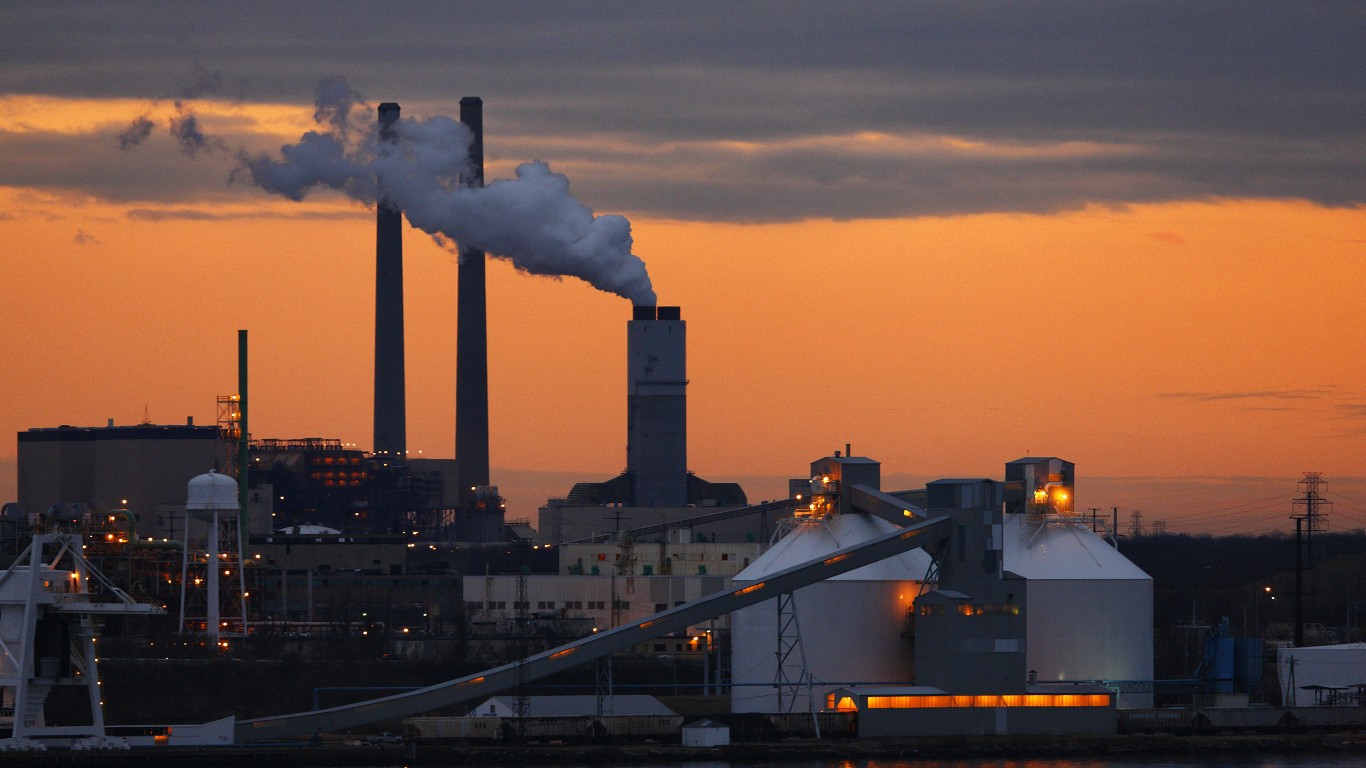
16. Baltimore-Columbia-Towson, MD
> High ozone days per year: 39
> No. of days with unhealthy particle pollution: 1
> People with asthma: 263,684
> Population: 2,808,175
Like Salt Lake City, Baltimore is another region prone to thermal inversions, areas where pockets of pollution become trapped under cold air. Because that pollution largely blows in from Midwestern states and settles in the Baltimore region, the state of Maryland sued the EPA in 2017, demanding that the agency apply more regulations to the power plants responsible for the bulk of the air pollution.
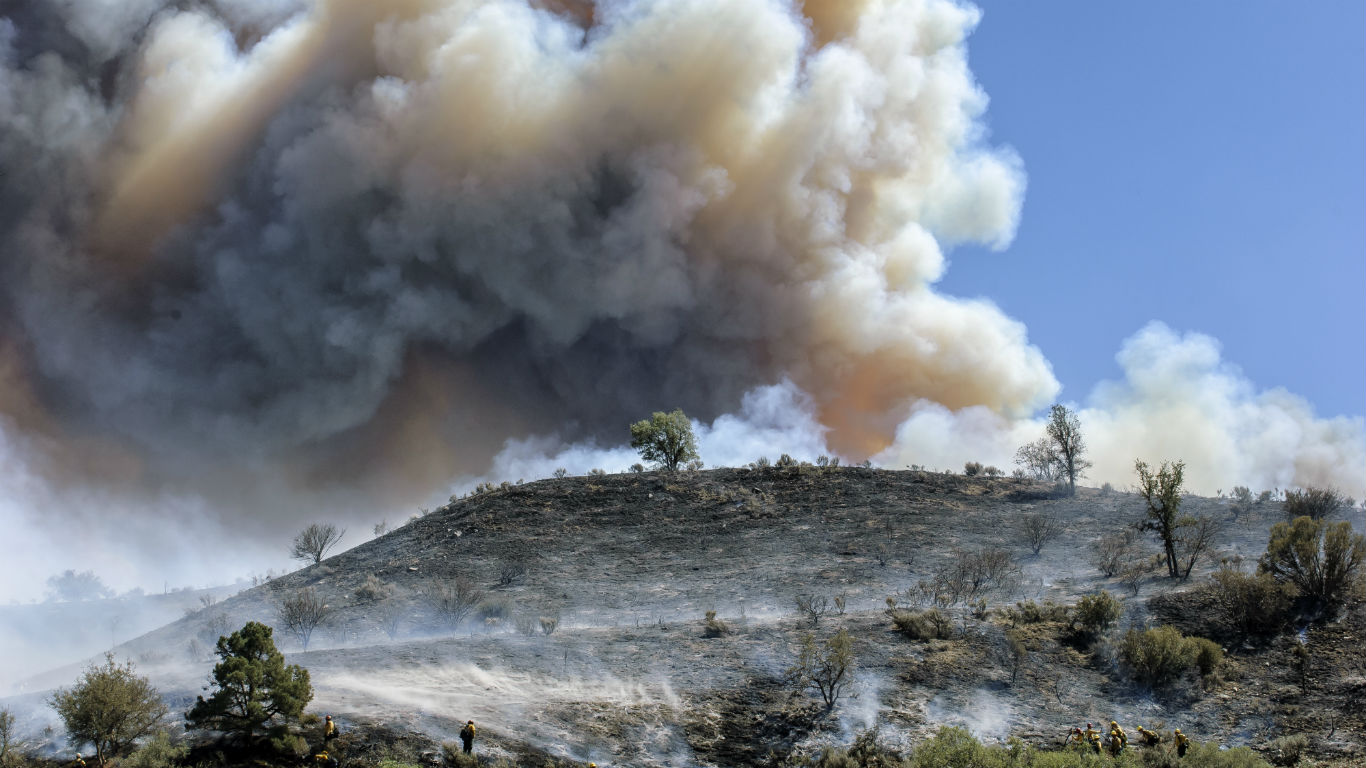
15. Hanford-Corcoran, CA
> High ozone days per year: 44
> No. of days with unhealthy particle pollution: 24
> People with asthma: 11,034
> Population: 150,101
Blowing dust brought on by drought and soot blown in from California’s many forest fires are some of the challenges that Central Valley metro areas like Hanford and Corcoran face when it comes to air quality. To help fight emissions, the San Joaquin Valley Air Pollution Control District, which includes parts of California’s Central Valley, has enacted regulations on residential burning of wood for heat, encouraging people to upgrade to pellet stoves or natural gas.
[in-text-ad]
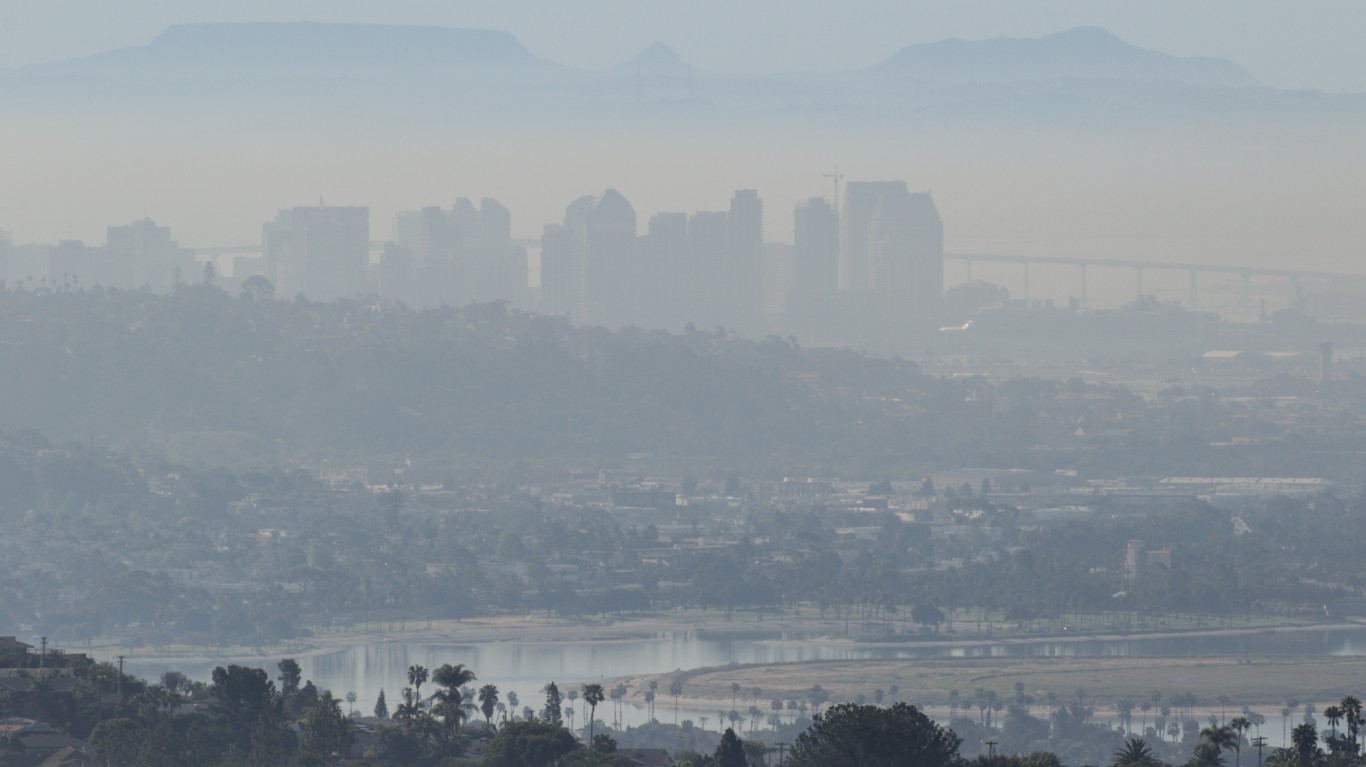
14. San Diego-Carlsbad, CA
> High ozone days per year: 45
> No. of days with unhealthy particle pollution: 1
> People with asthma: 250,609
> Population: 3,337,685
The sources of pollution in the San Diego area, among others, are its shipbuilding industry and busy freeways. A new statewide initiative called the Community Air Protection Program seeks to address the air-quality problems that often hit already disadvantaged areas the hardest. One strategy will be providing assistance in replacing old diesel engines and upgrading port industries to electric power.
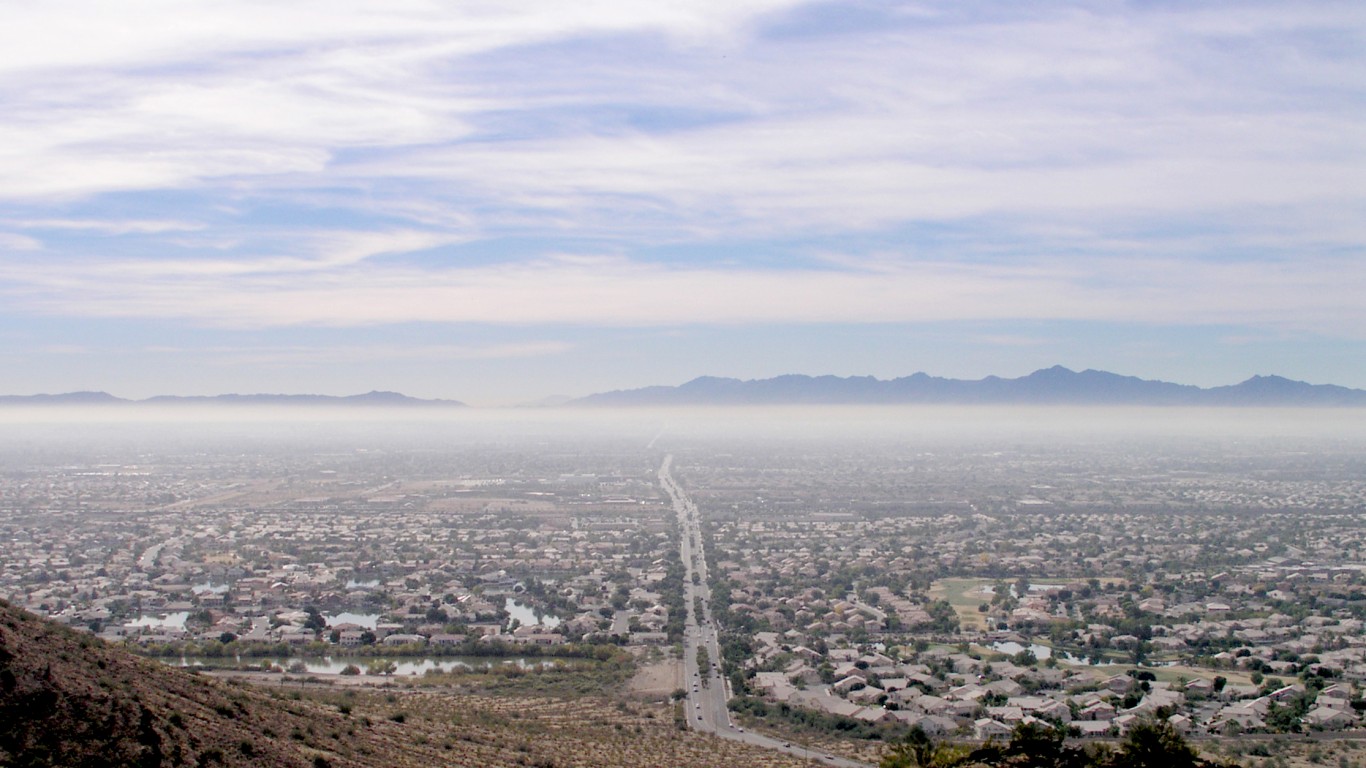
13. Phoenix-Mesa-Scottsdale, AZ
> High ozone days per year: 47
> No. of days with unhealthy particle pollution: 9
> People with asthma: 448,872
> Population: 4,737,270
The Phoenix metro area is known for its sprawling car-centric layout, so it’s no surprise that automobiles produce 42% of the air pollution in the surrounding Maricopa County. Despite the fact that other sources of pollution have dropped dramatically since the 1990s, energy legislation in the state continues to focus on regulating utilities companies rather than focusing on transportation.

12. Chicago-Naperville-Elgin, IL-IN-WI
> High ozone days per year: 51
> No. of days with unhealthy particle pollution: 4
> People with asthma: 716,958
> Population: 9,533,895
According to the National Resources Defense Council, Chicago’s West and South Side neighborhoods, which are primarily minority areas, are the most heavily exposed to air pollution in the city. Activists claim that city planners are pushing dirty industries to minority communities, while more affluent neighborhoods are developing condo buildings and high-end amenities instead of old industries.
[in-text-ad-2]

11. Houston-The Woodlands-Sugar Land, TX
> High ozone days per year: 52
> No. of days with unhealthy particle pollution: 1
> People with asthma: 445,024
> Population: 6,892,427
Houston’s climate and its car-dependent culture, coupled with the area’s petrochemical facilities, shipping channel, and busy interstate, create an ozone problem that blankets the metro area in smog.
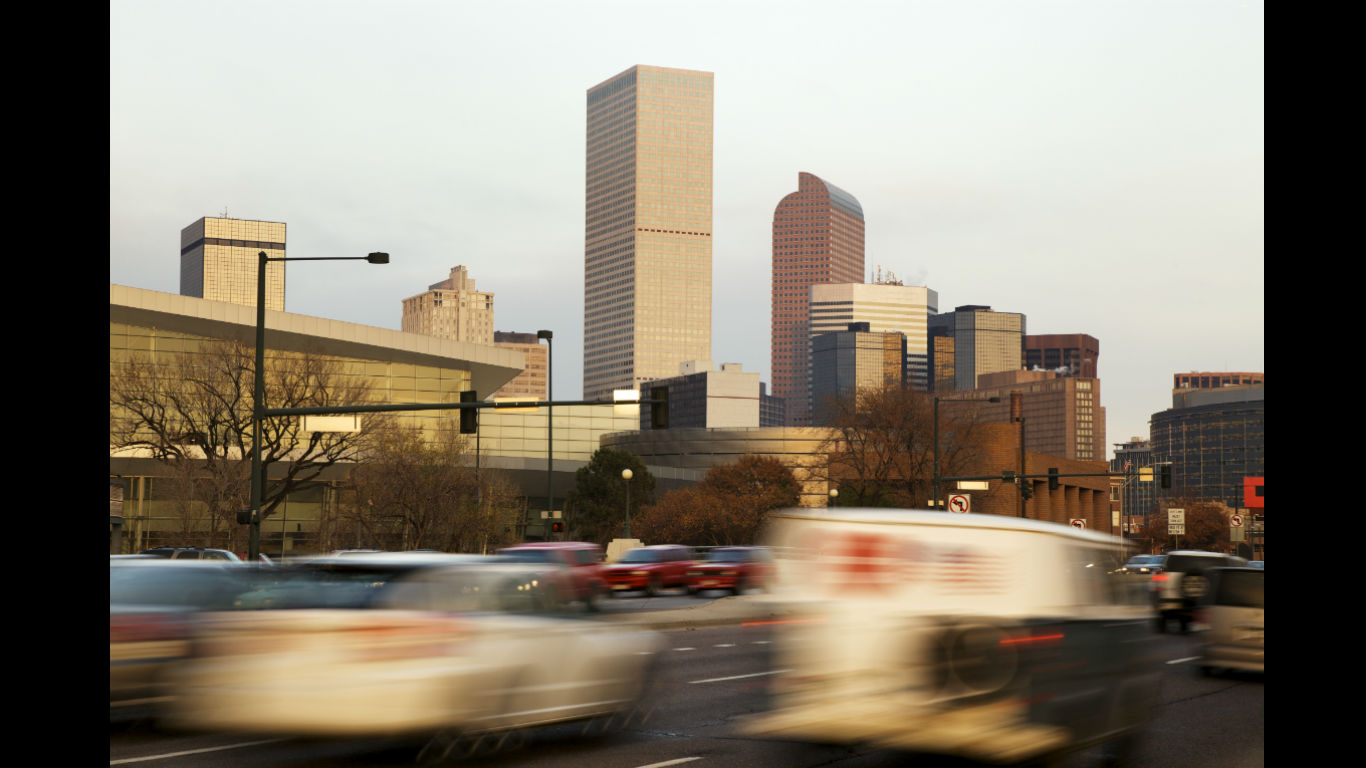
10. Denver-Aurora-Lakewood, CO
> High ozone days per year: 54
> No. of days with unhealthy particle pollution: 3
> People with asthma: 251,385
> Population: 2,888,227
The oil and gas industry in the state is hugely responsible for the Denver metro area’s large share of ozone pollution, but so are residents’ vehicles. Denver’s Mobility Action Plan aims to reduce car-commuting and increase the use of public transportation.
[in-text-ad]
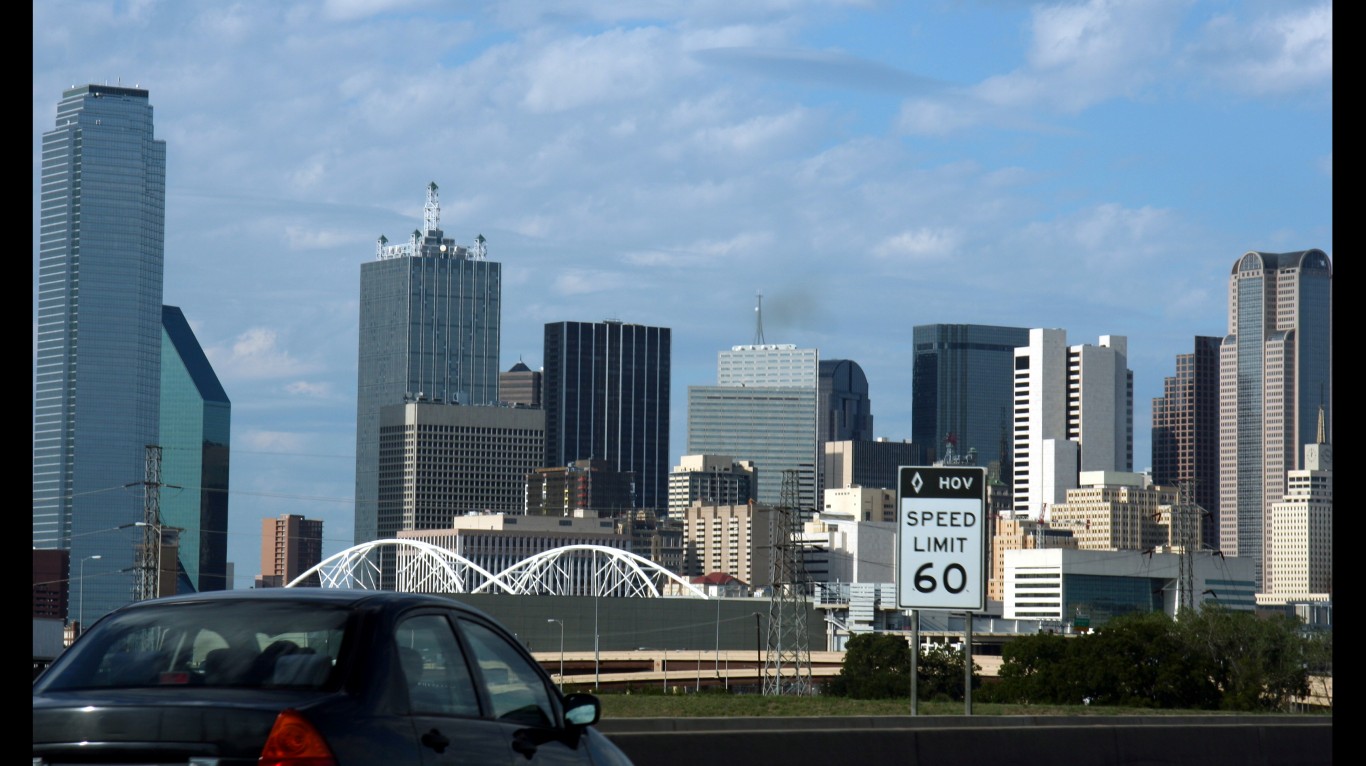
9. Dallas-Fort Worth-Arlington, TX
> High ozone days per year: 65
> No. of days with unhealthy particle pollution: 0
> People with asthma: 551,835
> Population: 7,400,479
An area rife with fracking, cement plants, and busy interstates, the Dallas-Fort Worth metro area struggles with high ozone levels. The number of particulate pollution days exceeding the standard level, however, was zero. Small improvements have been made through bans on idling trucks and cement plant upgrades.

8. Philadelphia-Camden-Wilmington, PA-NJ-DE-MD
> High ozone days per year: 75
> No. of days with unhealthy particle pollution: 3
> People with asthma: 546,311
> Population: 6,096,120
Another area that lies downwind of major sources of air pollution in the Midwest is the Philadelphia-Camden-Wilmington metro area. The area is also home to dozens of oil refineries and a busy interstate confluence.
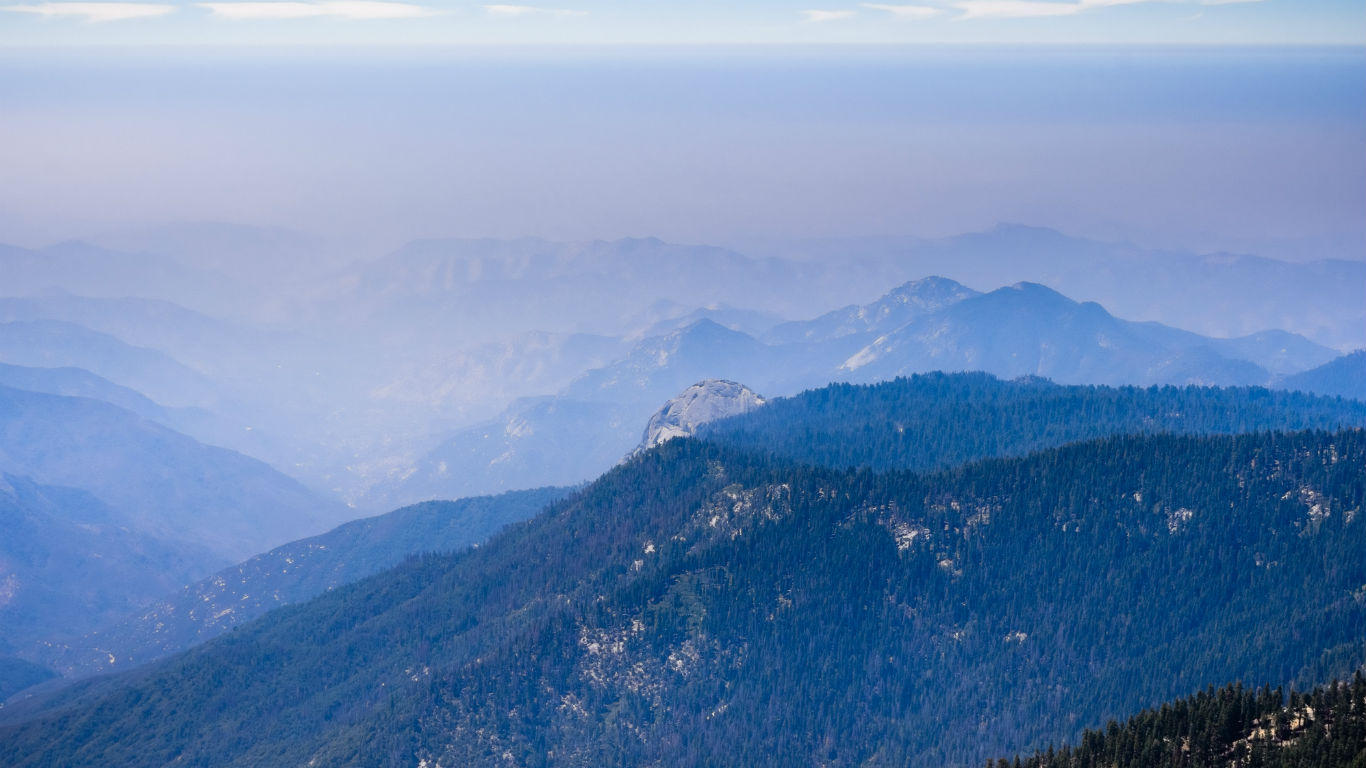
7. Fresno, CA
> High ozone days per year: 91
> No. of days with unhealthy particle pollution: 22
> People with asthma: 73,019
> Population: 989,255
Fresno has particle pollution that are nearly double the World Health Organization’s recommended levels. According to a study by the University of Chicago’s Energy Policy Institute, if the metro area could cut those levels to meet the WHO guidelines, it would add about a year to the lives of Fresno residents.
[in-text-ad-2]

6. Sacramento–Roseville–Arden-Arcade, CA
> High ozone days per year: 94
> No. of days with unhealthy particle pollution: 6
> People with asthma: 175,185
> Population: 2,324,884
Rising temperatures and heat waves are partially to blame for the Sacramento area’s high ozone levels — as do automobile and freight vehicle emissions. Smoke from California’s frequent forest fires also contributes to days of extremely high particle pollution.
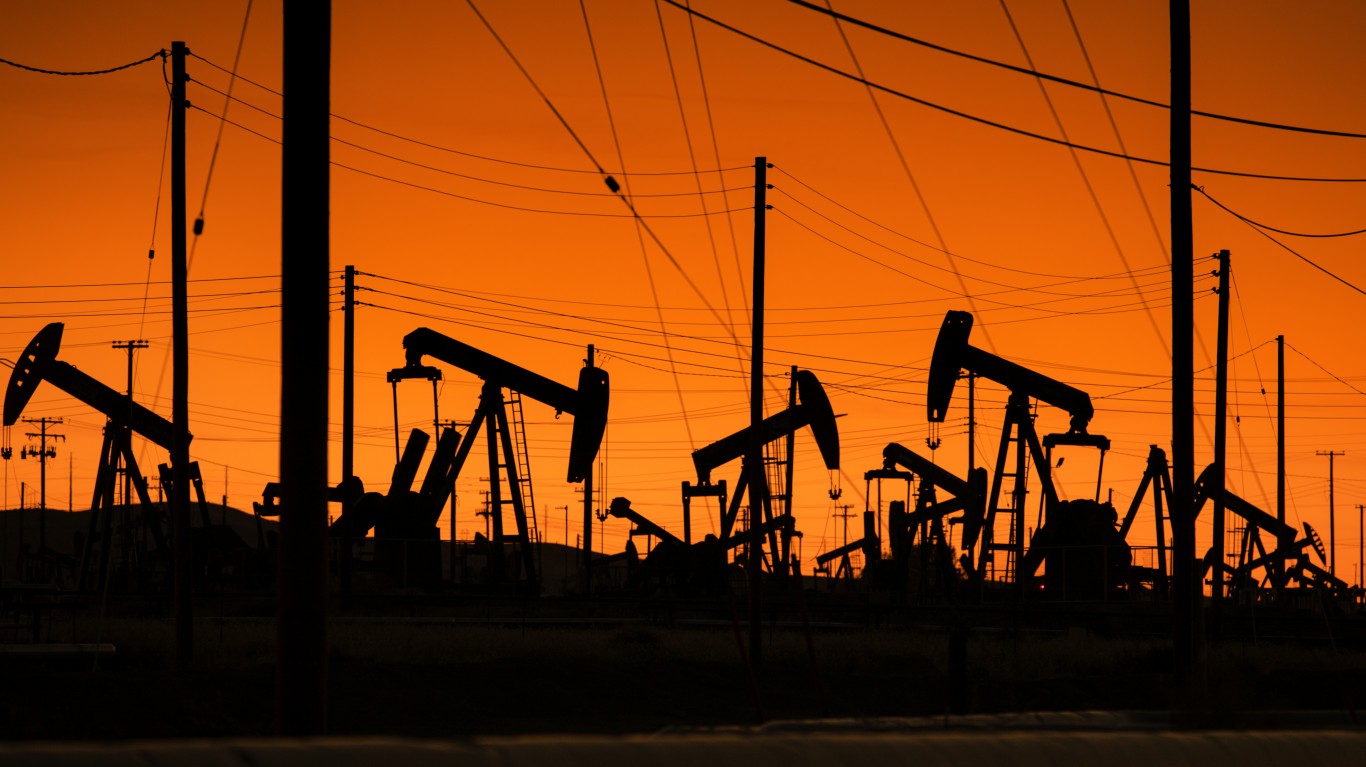
5. Bakersfield, CA
> High ozone days per year: 99
> No. of days with unhealthy particle pollution: 26
> People with asthma: 65,700
> Population: 893,119
At the south end of Central Valley, Bakersfield had the highest number of extreme particle pollution days out of all the most polluted cities in the United States. Emissions from the area’s agriculture sector and oil refineries, in addition to freight and automobile traffic, lead to nearly 100 days of high ozone in a year, the fifth highest number of average days of high ozone a year.
[in-text-ad]

4. Visalia-Porterville, CA
> High ozone days per year: 101
> No. of days with unhealthy particle pollution: 6
> People with asthma: 34,070
> Population: 464,493
Nestled beside State Highway 99 — a busy truck thoroughfare — the towns of Visalia and Porterville have the worst air pollution of any other area in California’s Central Valley. The virtually year-round sunny skies further contribute to the formation of ozone.
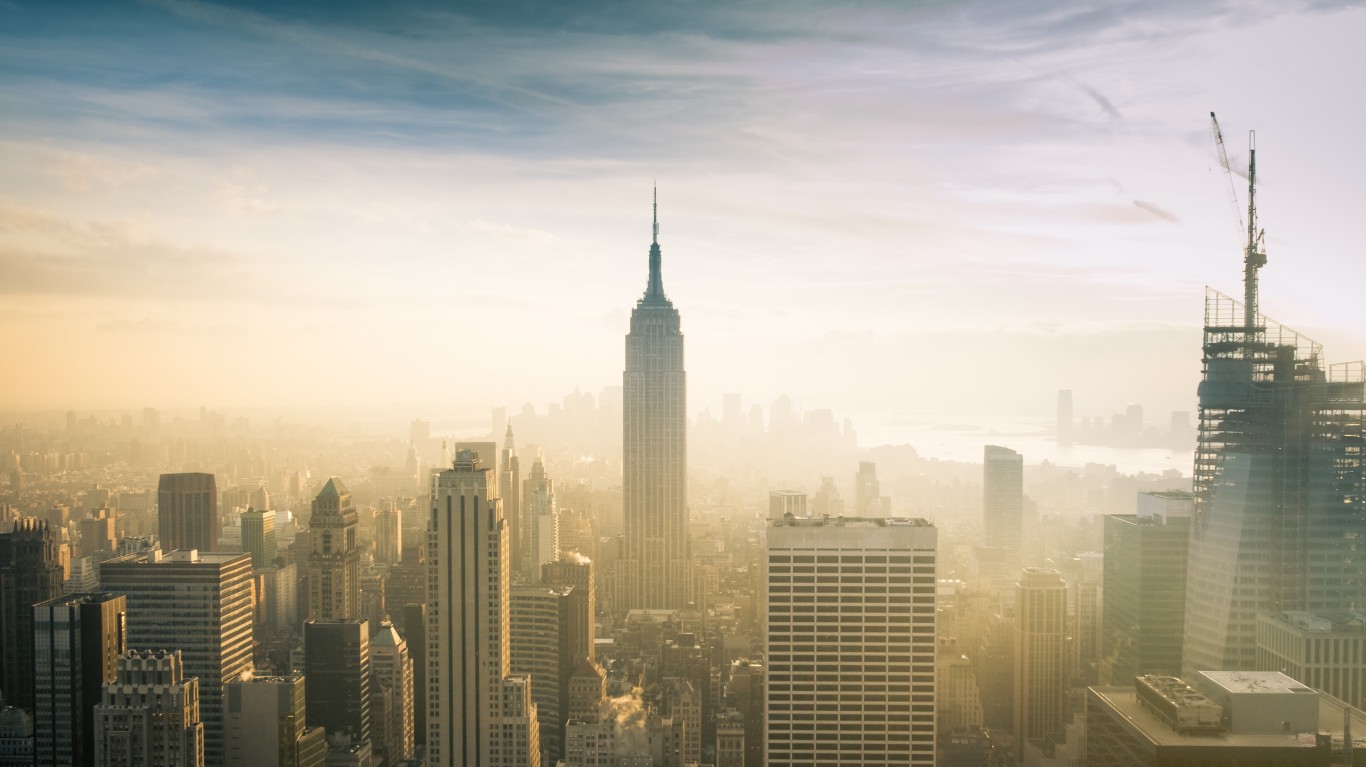
3. New York-Newark-Jersey City, NY-NJ-PA
> High ozone days per year: 102
> No. of days with unhealthy particle pollution: 1
> People with asthma: 1,640,663
> Population: 20,320,876
Although the area’s public transportation system, including hybrid busses, curbs emissions, New York City’s greater metro area is still one of the most polluted in the country. According to the American Lung Association, stricter regulations on soot in the area could save 3,000 lives every year.
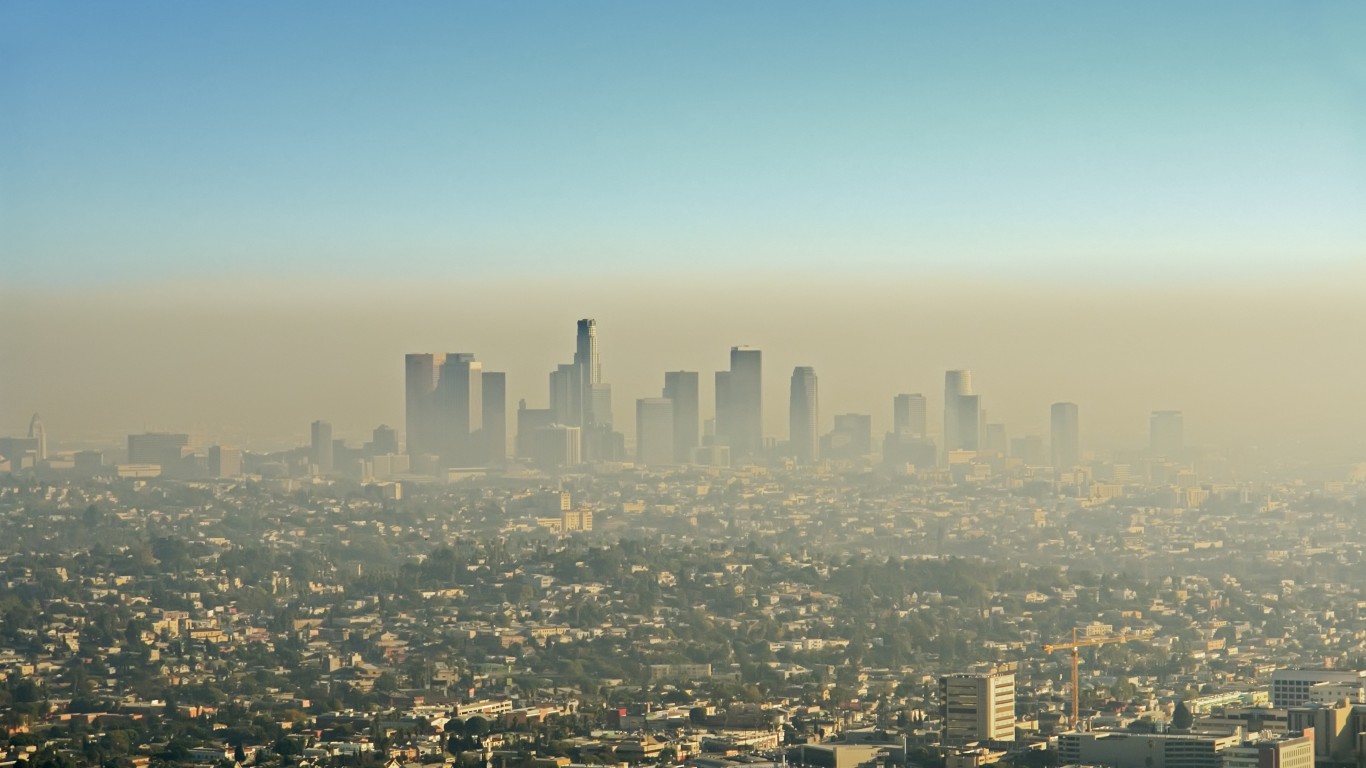
2. Los Angeles-Long Beach-Anaheim, CA
> High ozone days per year: 137
> No. of days with unhealthy particle pollution: 13
> People with asthma: 1,004,601
> Population: 13,353,907
A notoriously smoggy area prone to thermal inversions, the Los Angeles metro area is the second most polluted in the nation. High ozone levels persist for more than a third of the year, with the warm climate contributing to ozone formation.
[in-text-ad-2]
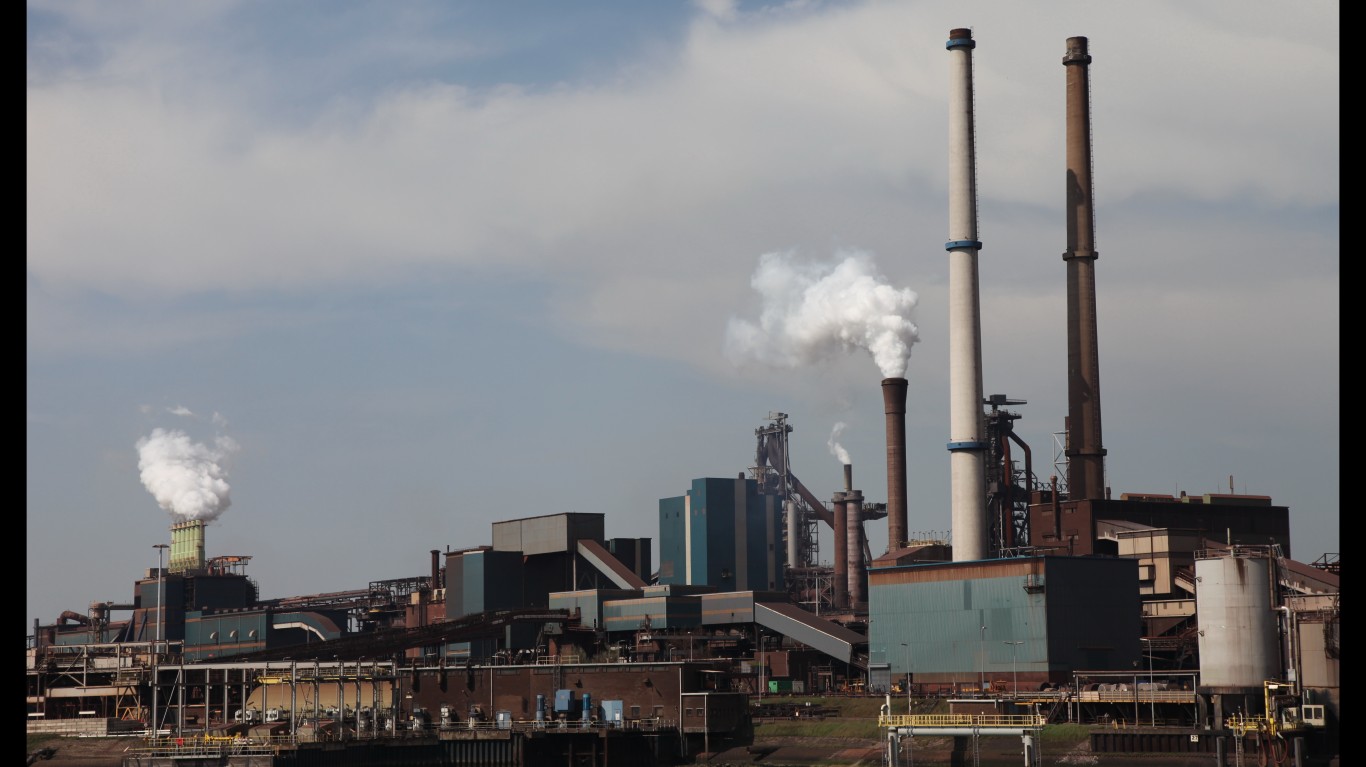
1. Riverside-San Bernardino-Ontario, CA
> High ozone days per year: 291
> No. of days with unhealthy particle pollution: 18
> People with asthma: 341,128
> Population: 4,580,670
With dangerously high ozone days nearly 80% of the year, the Riverside-San Bernardino-Ontario metro area in Southern California has the worst air pollution in the nation. The area’s climate and geography — hot and surrounded by mountains — play a huge role, as does the heavy truck traffic to and from the region’s many distribution warehouses.
Get Ready To Retire (Sponsored)
Start by taking a quick retirement quiz from SmartAsset that will match you with up to 3 financial advisors that serve your area and beyond in 5 minutes, or less.
Each advisor has been vetted by SmartAsset and is held to a fiduciary standard to act in your best interests.
Here’s how it works:
1. Answer SmartAsset advisor match quiz
2. Review your pre-screened matches at your leisure. Check out the advisors’ profiles.
3. Speak with advisors at no cost to you. Have an introductory call on the phone or introduction in person and choose whom to work with in the future
Get started right here.
Thank you for reading! Have some feedback for us?
Contact the 24/7 Wall St. editorial team.
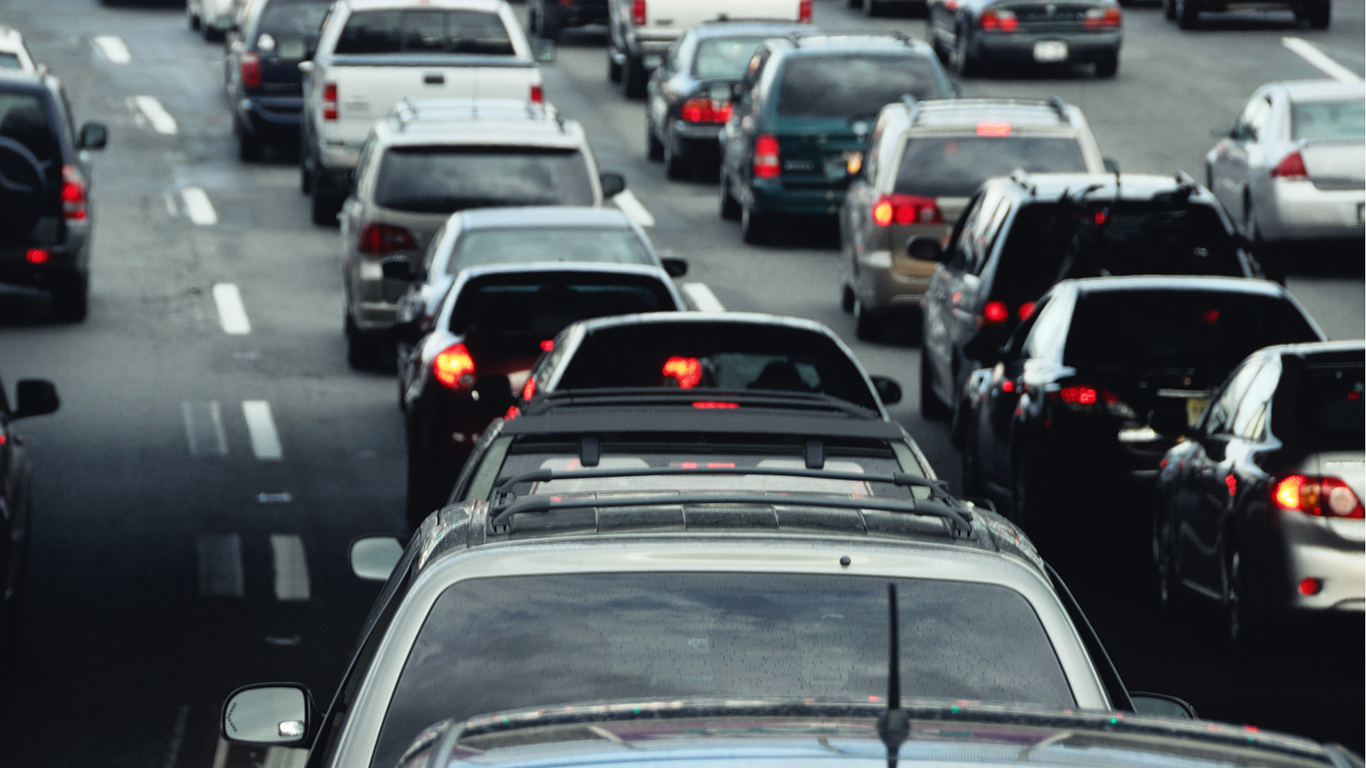 24/7 Wall St.
24/7 Wall St. 24/7 Wall St.
24/7 Wall St.

